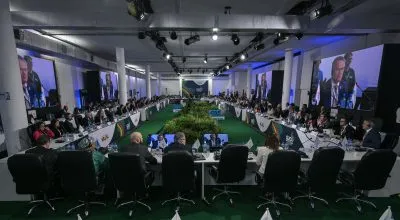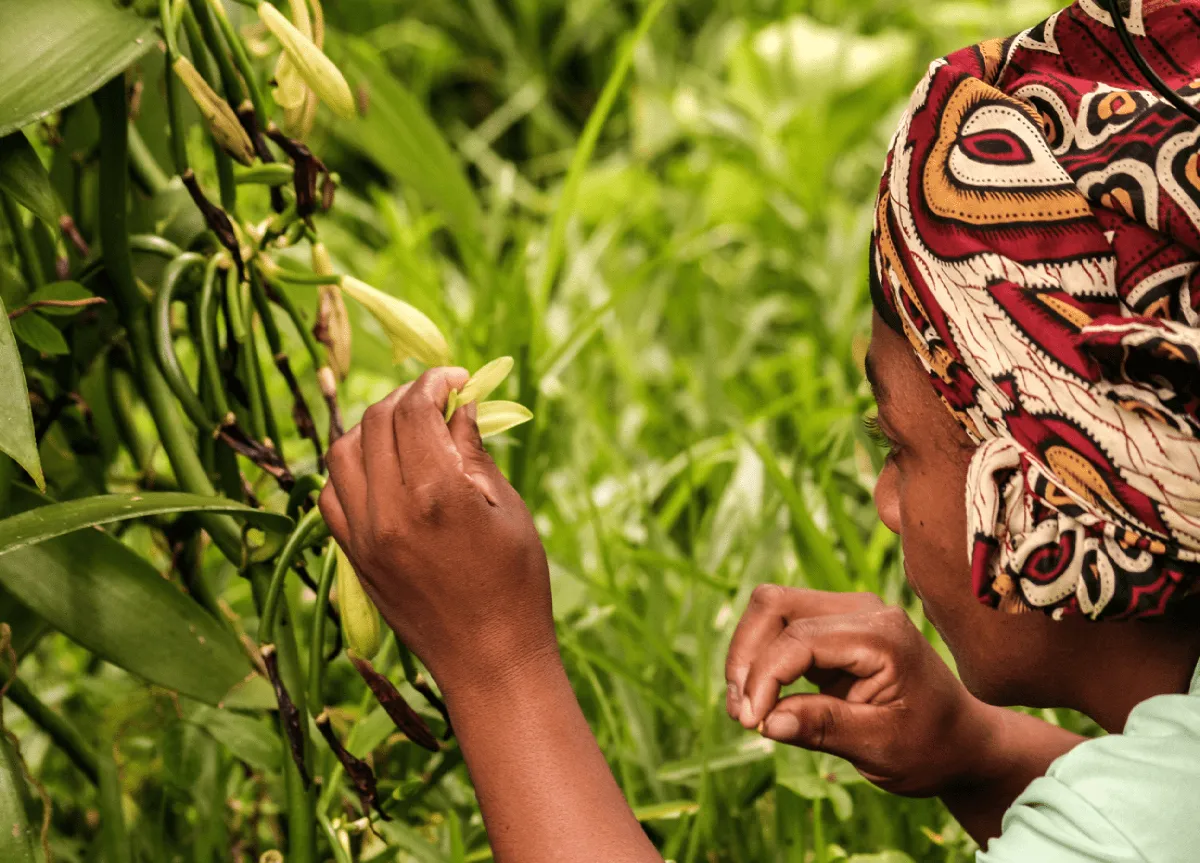The OECD/FOA’s annual report on agriculture documents the global outlook for this all-important economic sector. It provides invaluable guidance for Africa’s policymakers and farmer communities. Stephen Williams summarises some of the key recommendations.
The Agricultural Outlook 2019-2028 is a collaborative effort of the Organisation for Economic Cooperation and Development and the UN’s Food and Agriculture Organisation (OECD and FAO).
It provides a consensus assessment of the next decade’s prospects for agricultural and fish commodity markets at national, regional and global levels, and here we present the key findings as they relate to Africa.
The report states that several years of strong supplies have reduced the international prices of most agricultural commodities, with cereal, beef and sheep prices showing short-term rebounds. Most prices are projected to remain at or below current levels over the coming decade, as productivity improvements continue to outpace demand growth.
A growing global population will continue to use increasing amounts of agricultural products as food, feed and for industrial purposes. Encouragingly for Africa’s farmers, much of the additional food demand over the coming decade will originate in regions with high population growth, such as the continent itself.
Over the Outlook period, world population is expected to reach 8.4 billion people, with most growth concentrated in sub-Saharan Africa (which has 300m+ people).
The needs of a growing and a more affluent global population for food and raw materials will drive the demand for agricultural commodities over the next 10 years. Global utilisation is expected to be shaped in particular by the population-driven food demand in sub- Saharan Africa.
The OECD and FAO believe a substantial growth in meat consumption in many medium and high-income countries is expected to widen the gap in per capita meat consumption compared to many low-income countries, especially in sub-Saharan Africa.
Agriculture currently uses nearly 40% of the world’s land, of which some 70% is used as pasture.
Over the coming decade, the report says, global crop production is expected to expand by 384m tonnes (Mt) for cereals, 84Mt for oilseeds, 41Mt for roots and tubers, 19Mt for pulses, and 3Mt for cotton. The growth in crop production will be achieved by yield improvements.
It’s noted that since the beginning of the “Green Revolution” in the 1950s, the use of such inputs had grown strongly in much of Asia and Latin America, while technological change in sub-Saharan Africa has historically been much slower.
Its perhaps unsurprising that the report’s authors think that animal husbandry in Africa will remain largely dependent on small-scale producers. Intensification is constrained by structural issues such as a lack of investment capital, the limited availability of feed, and environmental factors such as desertification in North Africa.
Interestingly, the experts report that in some countries, such as South Africa and Tanzania, the modernisation of the poultry supply chains has resulted in intensified production, which is expected to lead to further growth in the next decade.
However, there are concerns regarding the production of greenhouse gases (GHGs) by the flatulence of ruminants, over the next decade, and assuming no change in current policies and technologies, projections imply a growth in direct GHG emissions of 0.5% p.a.
Almost half of the growth in direct emissions is expected to come from cattle, with another 15% coming from small ruminants (sheep and goats).
Geographically, most of the increase in direct GHG emissions from agriculture is projected to come from the developing world, with Africa alone accounting for more than 40% of the increase.
The agri-trade picture
So it is a challenging picture that emerges. The growth of imports in Africa is linked to strong population growth (a challenge in itself) and is expected to continue throughout the decade (although the Outlook does not cover tropical products, of which Africa is a net exporter).
Cereals
Cereals are important food crops in both North and sub-Saharan Africa. The report points out that both are net importers of cereals, which support food security both directly and through use as animal feed.
In North Africa, maize and other coarse grains are predominantly used as feed, while wheat and rice are used as food. The region is a net importer across these four categories, a situation that is expected to continue in the coming decade.
In sub-Saharan Africa, maize (especially white maize) and other coarse grains (including local grains such as teff) are mostly used as food, and the region is self-sufficient for these traditional cereals. As incomes grow, the demand for rice and wheat is increasing, leading to rising imports.
The impact, the report points out, will be especially pronounced for rice, where Africa’s share of world imports is expected to grow from 35% to 50% over the next decade.
In sub-Saharan Africa, per capita incomes are expected to rise by 14.2% over the projection period, in particular due to high economic growth expected in Ethiopia at 7.6% p.a. over the next ten years.
But high population growth in sub-Saharan Africa means that the relatively high rate of economic growth in the region (at close to 4% p.a.) corresponds to only modest growth in per capita incomes (around 1.3% p.a.).
Global cereal production is projected to grow by 1.2% p.a. between the base period and 2028, reaching 3,053Mt in 2028; with much of the growth due to gains in yields.
Over the outlook period, the global average of cereal yields is projected to increase by 1.1% a year (slower than the 1.9% seen in the previous decade), driven by advances in biotechnology, structural changes towards larger farms, and improved cultivation practices.
The total area is projected to increase only marginally, principally due to additional new agricultural land (Africa, Eastern Europe and Latin America). Improved seed varieties will continue to drive increases in yield and the increasing number of commercial farms, particularly in Africa and the Black Sea region, will facilitate access to new technologies, including machinery and extension services.
Maize for human consumption is projected to increase by 27Mt, especially in sub-Saharan Africa where white maize is an important food staple and the population is growing rapidly.
The use of other coarse grains is projected to increase by 32Mt, with higher food use expected in Africa.
Over the report’s outlook period, rice import demand in sub-Saharan Africa (where population is increasing rapidly) is expected to be strong.
The bulk of additional food demand is expected to come from Africa and India, where cereal staples remain the main components of national diets and where populations are growing rapidly.
In addition, while the average per capita consumption of cereals has reached a saturation level globally, it is increasing robustly in Africa, particularly in Ethiopia with per capita intake gains of about 20kg per capita and lesser developing countries (LDCs) in sub-Saharan Africa with 10kg per capita.
In Africa, where rice is gaining importance as a major food staple, per capita rice consumption is projected to grow faster, increasing by about 5kg over the outlook period. Globally, the average food per capita consumption of rice is projected to increase by 1kg to reach 55kg a year.
The report notes that cereal prices could be affected by a potential further slowdown in economic growth of fast-growing economies and lower energy prices caused by the uptake of new energy sources and new extraction technologies.
Moreover, the reinforcement of food security and the sustainability criteria in the reform and design of biofuel policies may also impact the demand for cereals.
The international trade environment for cereals, the OECD/FAO cautions, also faces increasing uncertainty that may influence trade flows. It says that further trade protection, the resolution of existing trade tensions and the emergence of new regional trade agreements may have important implications for future developments in cereal markets.
Oilseeds and oilseed products
Demand for protein meals has tapered off given China’s imposition of additional tariffs on US soybean exports and subsequent moves to lower the share of protein meal in feed rations.
The vegetable oil sector was characterised by a slowdown in global trade, largely reflecting a decrease in edible oil imports by India in 2018. This resulted from an expansion in domestic oilseeds production, combined with increased import tariffs.
Several countries also expanded their crushing capacity, thus increasing their seed imports at the expense of oil and meal purchases.
Although not commented upon in the Outlook report, it might be mentioned that African countries are switching away from importing palm oil by growing sunflowers and other crops for seed oil, as is taking place in Tanzania. This indicates an important trend.
Sugar
There are increasing concerns over the potential health effects of excessive sugar consumption and high levels of sugar consumption have raised health concerns (obesity, diabetes, and other associated health issues).
Although demand growth for sugar has slowed in recent years due to a decrease in world population, growth rates and growth in sugar intake continues to remain strong in many developing countries, where per capita consumption is relatively low.
Health concerns have triggered policy actions such as the introduction of taxes on high caloric sweeteners (sugar and high fructose corn syrup).
In Africa, growth in output will be driven by strong domestic demand for sugar as well as trade opportunities. Sugar output is projected to increase by 48% to reach 16.7Mt by the end of 2028 compared to the base period as a result of production expansion in sub-Saharan countries supported by investments at the farm and mill levels.
Despite this production growth, the continent will continue to represent a small share of the world market (8% in 2028).
Sugar in South Africa is projected to expand, shielded by higher import duties (from $566/t to $680/t in August 2018); increasing inputs costs and frequent tensions between mills and workers hamper further growth.
Meat
As the report had previously commented, meat consumption is becoming increasingly questioned as both representing a poor use of agricultural land and for its contribution to GHG emissions.
Import demand for meat is expected to increase at the fastest rate in Africa. Historically, lower product prices have contributed to making poultry and pork the favourite choice for consumers in developing countries, but rising income levels are allowing those same consumers to gradually diversify their meat consumption to more expensive meat varieties such as beef and lamb, the report states.
It adds that meat exports at the global level (excluding live animals and processed products) are projected to be 18% higher in 2028 than in the base period. This represents a slowing down of meat trade growth to an annual average rate of 1.4%, compared to 3% during the previous decade. However, the share of total meat output traded on the global market will slightly increase.
Animal diseases have in the past disrupted poultry, beef and other livestock markets, and have the potential to do so again during the coming decade.
A current epidemic affecting livestock production is the African Swine Fever, which is fatal to pigs and wild boars although it does not affect humans. Last year, in August 2018, China reported an outbreak of the disease.
Changing consumer preferences – such as the rise in vegetarian or vegan lifestyles, societal concerns and various socio-cultural aspects such as those dictated by religion or cultural norms – will also have an impact on the world’s meat trade.
As for dairy and dairy products, world milk production (81% cow milk, 15% buffalo milk, and a total of 4% for goat, sheep and camel milk combined) grew by 1.6% in 2018 to about 838Mt. World milk production is expected to grow at 1.7% a year (to 981Mt).
Milk is a highly perishable product and requires to be processed shortly after collection. It cannot be stored for more than a few days. Nevertheless, most of dairy production is consumed in the form of fresh dairy products, which are not or only slightly processed.
The share of fresh dairy products in world consumption is expected to increase over the coming decade due to strong demand growth in developing countries, driven by income and population growth.
Fish
Statistics posited by the OECD/FAO suggest that, overall, 2018 has been a year of further expansion for the fisheries and aquaculture sectors, with production, trade and consumption all reaching historical peaks.
The growth in production was due to an increase in capture fisheries and the continued expansion of aquaculture production, at some 3-4% a year.
By 2028, aquaculture is projected to produce substantially more fish than the capture sector (8.0 Mt).
While inadequate governance and stock depletion of some fisheries will continue to be a concern at the global level, the quantity of fish produced by capture fisheries is projected to increase slightly over the outlook period (0.2% p.a.), partly supported by expectations that improved management conditions in several regions will continue to pay dividends.
It is projected that fish production will predominantly continue to be consumed as food (178Mt in 2028), with only 9.4% utilised for non-food uses (mainly as fishmeal and fish oil). The share of fish for human consumption originating from aquaculture is projected to increase from 52% (average 2016-18) to 58% in 2028.
Cotton
Cotton is an important export crop for sub-Saharan Africa, which currently accounts for 15% of global exports (with West Africa accounting for almost 75% of the continent’s production). Burkina Faso, Benin, Mali, and Côte d’Ivoire, the leading producing countries, have seen their volumes expanding during recent seasons due to area expansion and government support.
Spinning mill consumption remains limited throughout sub-Saharan Africa and most countries export virtually all of their production.
Sub-Saharan African exports are projected to continue growing at around 2.6% p.a. in the coming decade, increasing the region’s market share to 17%, with Asia and Southeast Asia being the major destinations for shipments.
Sustainability considerations will continue to influence the future demand and supply of cotton. Globally, an estimated 19% of cotton was produced under the sustainability standards of the Better Cotton Initiative in 2017-18. Related segments such as organic cotton are also expected to grow. One consequence of these trends is an increased need for transparency and traceability along the supply chain.
Want to continue reading? Subscribe today.
You've read all your free articles for this month! Subscribe now to enjoy full access to our content.
Digital Monthly
£8.00 / month
Receive full unlimited access to our articles, opinions, podcasts and more.
Digital Yearly
£70.00 / year
Our best value offer - save £26 and gain access to all of our digital content for an entire year!
 Sign in with Google
Sign in with Google 



